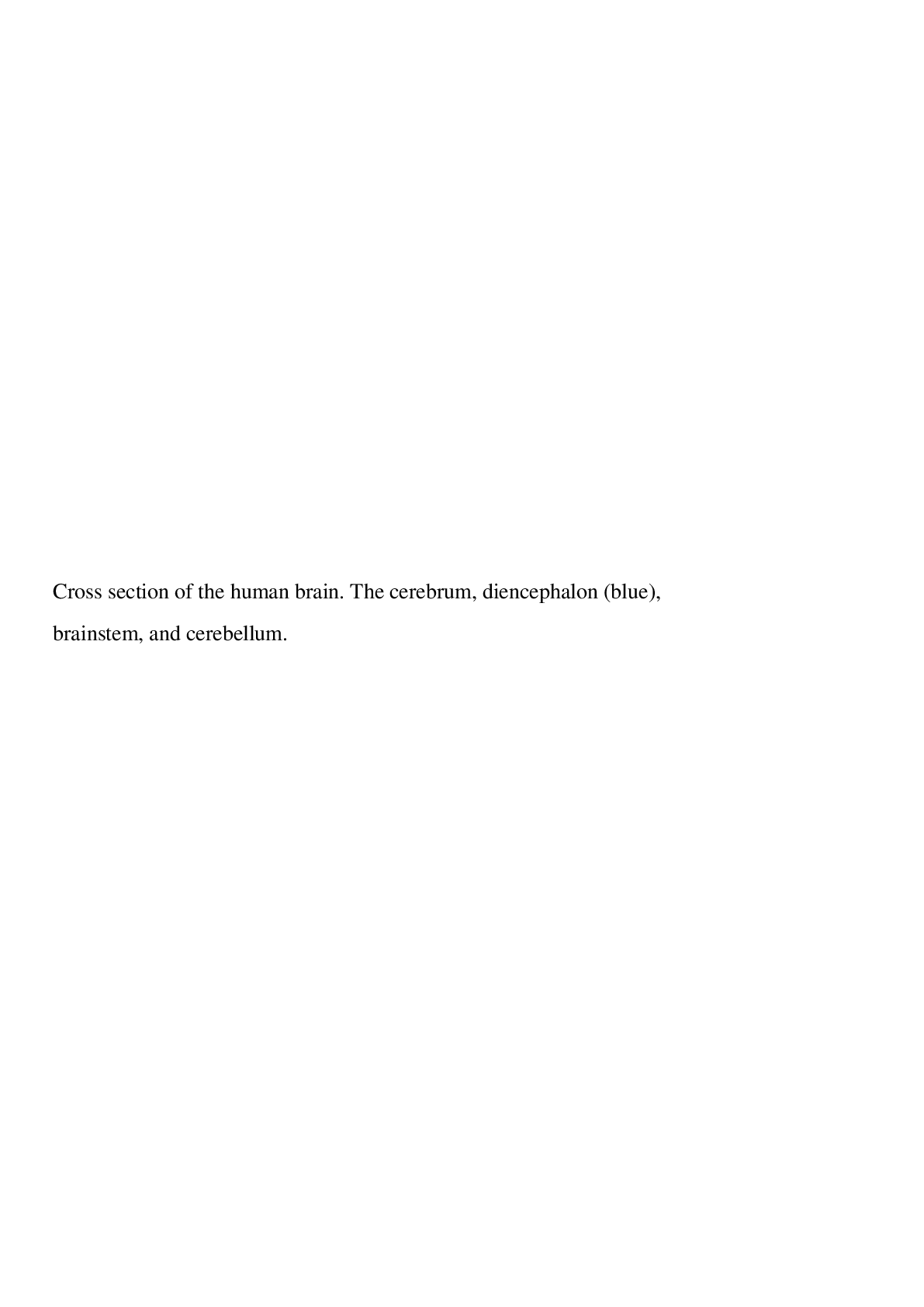Social Sciences > QUESTIONS & ANSWERS > NAADAC Practice Test 2 - Updated Version. Questions with accurate answers, rated A (All)
NAADAC Practice Test 2 - Updated Version. Questions with accurate answers, rated A
Document Content and Description Below
NAADAC Practice Test 2 - Updated Version. Questions with accurate answers, rated A *1)* Quantity, frequency of use, patterns over time, and progression are necessary questions when taking the ... client's _______________. A. legal history B. medical history C. family history D. drug and alcohol history - ✔✔-A. legal history B. medical history C. family history *D. drug and alcohol history * See page 42 of the study module two updated version *1)* *To identify those who have a condition related to a psychoactive substance use disorder* *2)* *To assess the full range of difficulties currently experienced by the client. The addiction counselor or other helping professional should rate the symptom severity, diagnose evident mental health disorders and screen for related difficulties or challenges* *3)* To plan appropriate treatment interventions for the client *4)* To involve the appropriate family members or significant others in the client's evaluation and treatment *5)* To determine the methods for evaluating the effectiveness of the treatment interventions that will be implemented. *2)* A good treatment plan generally consists of the following elements except _____________. A. problem statement B. goal statement C. measurable objectives D. consequences of relapse - ✔✔-A. problem statement B. goal statement C. measurable objectives *D. consequences of relapse* See page 46 of the study module two updated version A, B and C are listed, not D The Need A Goal Statement Measurable Objective Strategies and Interventions *3)* When working with a client who has relapsed, it is most important to __________________. A. discontinue treatment B. help the client identify his or her internal and external relapse triggers C. make sure the client understands the very serious consequences of using D. strongly confront the client on his or her behavior - ✔✔-A. discontinue treatment *B. help the client identify his or her internal and external relapse triggers* C. make sure the client understands the very serious consequences of using D. strongly confront the client on his or her behavior See page 58 of the study module two updated version "The client requires a great deal of empathy and understanding after a relapse" Which is not C of D *4)* The DAST is used to assess a client's __________________. A. progress during treatment B. mental health C. financial stability D. level of psychoactive substance abuse - ✔✔-A. progress during treatment B. mental health C. financial stability *D. level of psychoactive substance abuse* See page 41 of the study module two updated version *One example is the Drug Abuse Screening Test (DAST)* Another tool is the Michigan Alcoholism Screening Test (MAST) *5)* The two phase process by which a counselor forms a caring relationship with the client and begins gathering pertinent information about the client is known as ______. A. treatment planning B. followup C. evaluation D. intervention - ✔✔-A. treatment planning B. followup *C. evaluation* D. intervention See page 40 of the study module two updated version *6)* History of communication patterns and the generational history of addiction and mental health problems are associated with interview questions regarding __________________. A. drinking history B. drug history C. family history D. employment history - ✔✔-A. drinking history B. drug history *C. family history* D. employment history See page 43 of the study module two updated version *7)* Good interpersonal skills, limited confrontation, and the frequent use of empathy been empirically found to be characteristics of __________________. A. unsuccessful counseling B. adequate counseling C. enabling counseling D. effective counseling - ✔✔-A. unsuccessful counseling B. adequate counseling C. enabling counseling *D. effective counseling* See page 84 of the study module two updated version These are all the traits listed in this section *8)* An _______________ differs from a listening response in that it deals with the implicit part. A. interpretation B. action response C. empathic response D. integration - ✔✔-*A. interpretation* B. action response C. empathic response D. integration See page 87 of the study module two updated version *9)* In motivational interviewing, the "A" in the acronym OARS stands for __________________. A. ask B. assess C. affirm D. action - ✔✔-A. ask B. assess *C. affirm* D. action See page 59 of the study module two updated version *OARS* *Open Questions* *Affirmation* *Reflective Listening* *Summary Reflections* *Open questions, affirmation, reflective listening, and summary reflections (OARS)* are the basic interaction techniques and skills that are used "early and often" in the motivational interviewing approach. https://www.google.com/search?q=oars+questioning&oq=oars+questioning&aqs=chrome..69i57.4614j 1j7&sourceid=chrome&ie=UTF-8 *10)* The purpose of the screening process during evaluation is all of the following *except* _________________. A. to determine the presence of any dual disorders B. to determine who will be paying for the client's treatment services C. to ascertain whether the client is a good fit for the treatment program D. to gather basic biographical information about the client - ✔✔-A. to determine the presence of any dual disorders *B. to determine who will be paying for the client's treatment services* C. to ascertain whether the client is a good fit for the treatment program D. to gather basic biographical information about the client See page 41 of the study module two updated version Not sure about this, I think it should be A but the test says B *11)* ________________ does not point to any specific therapy or theoretical approach but rather is a relative set of therapies that include a shorter time period and fewer sessions than *"traditional"* therapy. A. Gestalt therapy B. Brief therapy C. Family systems therapy D. Motivational interviewing - ✔✔-A. Gestalt therapy *B. Brief therapy* C. Family systems therapy D. Motivational interviewing Page 90 of study guide two, the updated version First paragraph *12)* Premature counselor self disclosure can often cause the client to feel ____________________. A. an enhanced bond with the counselor B. valued and understood C. threatened and anxious D. that the counselor is trustworthy - ✔✔-A. an enhanced bond with the counselor B. valued and understood *C. threatened and anxious* D. that the counselor is trustworthy Page 55 of study guide two, the updated version - It can be seen as threatening. - It can blur the relationship boundaries. - Disclosing too little can add to therapeutic distance. - Disclosing too much can lead to the addiction counselor or other helping professional being perceived as lacking discretion, being untrustworthy, self-preoccupied and/or needing therapy him or herself. - Premature feedback about a client's attitude or behavior can contribute to feelings of inferiority or rejection in that client. - Too much disclosure does not allow the client to talk. *13)* The conscious and unconscious feelings and attitudes the addiction counselor has towards a client are part of what is known as _______________. A. regression B. countertransference C. boundary interference D. transference - ✔✔-A. regression *B. countertransference* C. boundary interference D. transference Page 91 of the study guide two updated version Bottom of the page, has roots in Freudism *14)* The counseling skill used to tie together multiple elements or themes in a client's various messages is ________________. A. probing B. clarifying C. summarization D. reflection - ✔✔-A. probing B. clarifying *C. summarization* D. reflection Page 86 of the study manual two updated version - Tie together multiple elements or themes in the client's various messages. - Formulate a summarization consider the key content and affect of what the client has said, being careful to note patterns and themes. - Serve as a feedback tool. - Moderate the pace of a session. - Evaluate the effectiveness of the summary. *15)* Establishing a clear system of constant support to the client once he or she leaves treatment is referred to as ____________. A. A Continuing Care Plan B. Relationship Building C. Termination D. Service Coordination - ✔✔-*A. A Continuing Care Plan* B. Relationship Building C. Termination D. Service Coordination Page 81 of the study manual two updated version - Planning for discharge should begin at treatment admission and continue throughout the client's stay in treatment. - The addiction counselor or other helping professional should work with the client to establish a clear system of constant support to help the client once he or she leaves treatment. - This is accomplished by developing an individualized, written continuing care plan to be implemented after termination from treatment. - The plan should be viewed as a joint venture between the addiction counselor or other helping professional and the client, where the addiction professional is coordinating and the client is participating and collaborating. - This may also be an effective time to introduce a Recovery Support Specialist to the client in order to assist with the continuing care plan [Show More]
Last updated: 2 years ago
Preview 1 out of 39 pages
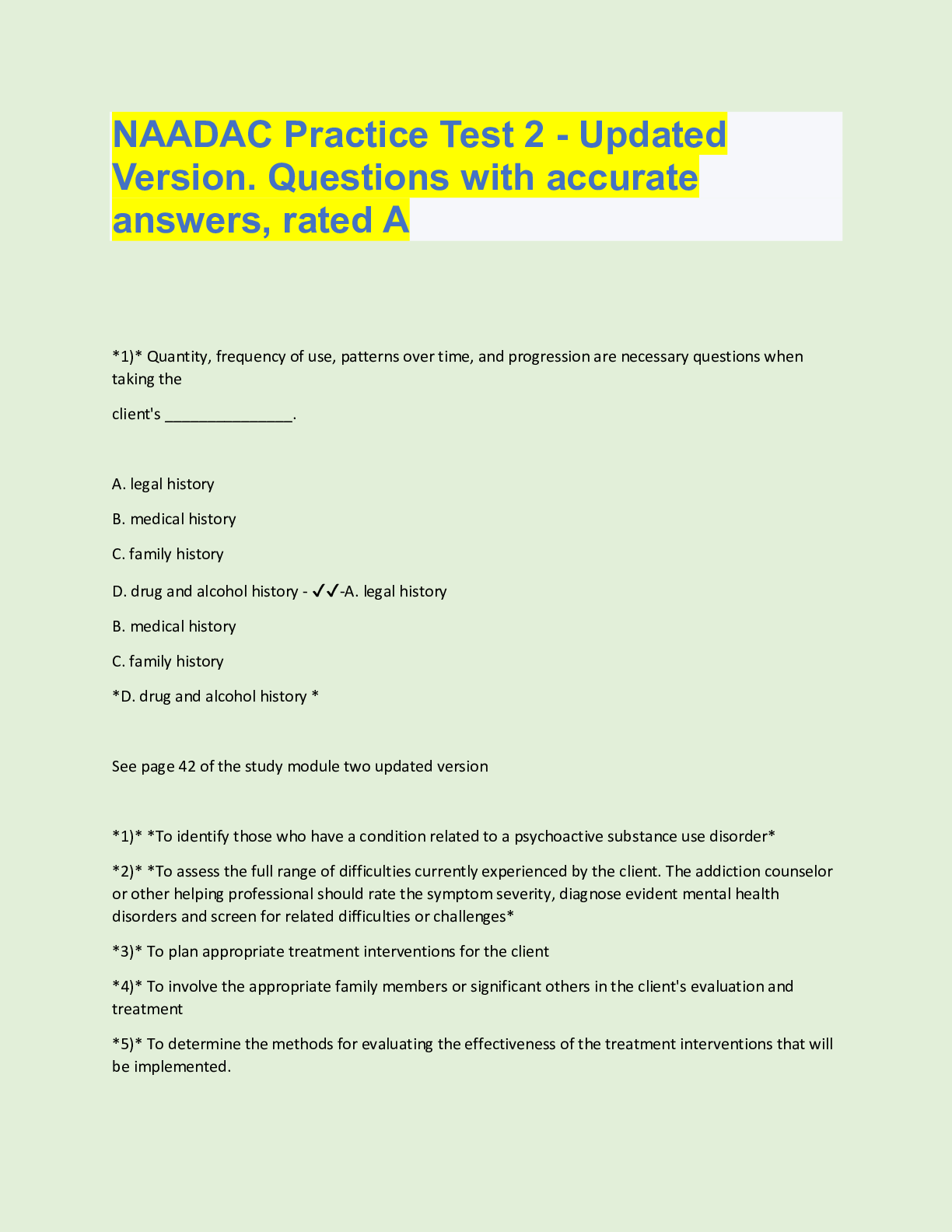
Buy this document to get the full access instantly
Instant Download Access after purchase
Buy NowInstant download
We Accept:

Also available in bundle (1)

NAADAC BUNDLE, verified., latest exam versions.
NAADAC Practice Test ALL Modules Top Examinable Questions preceded with answers. Graded A
By Topmark 2 years ago
$32
19
Reviews( 0 )
$12.00
Can't find what you want? Try our AI powered Search
Document information
Connected school, study & course
About the document
Uploaded On
Mar 14, 2023
Number of pages
39
Written in
Additional information
This document has been written for:
Uploaded
Mar 14, 2023
Downloads
0
Views
79

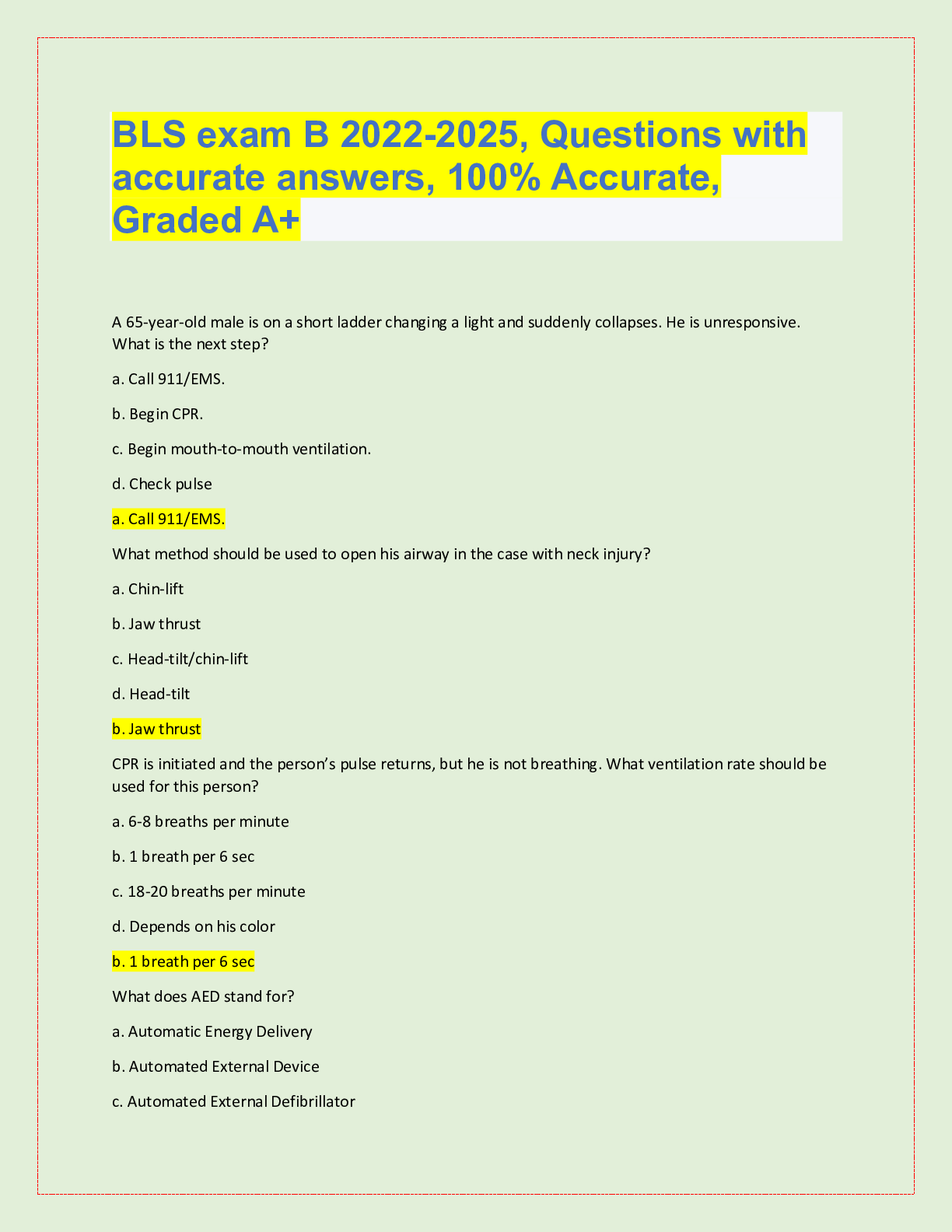














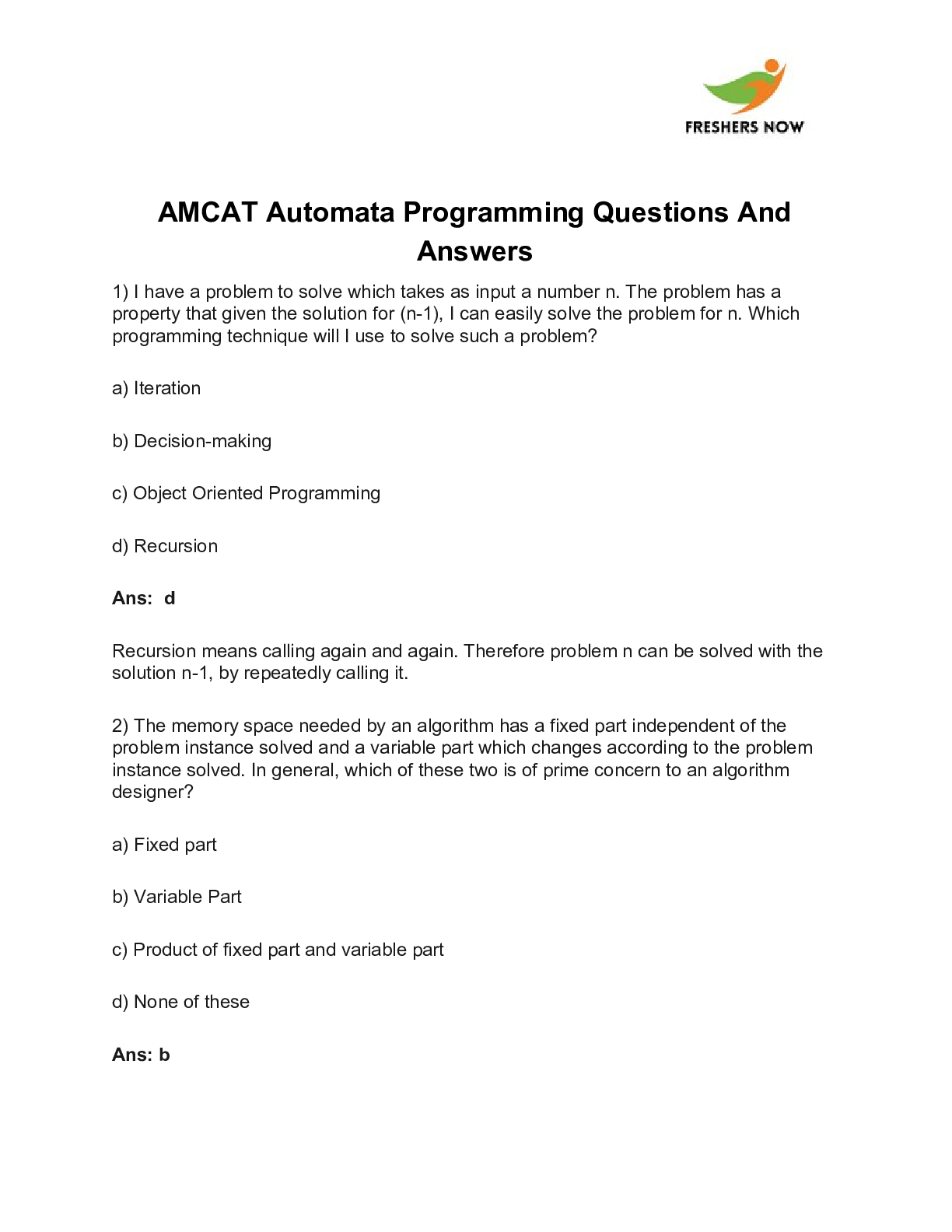

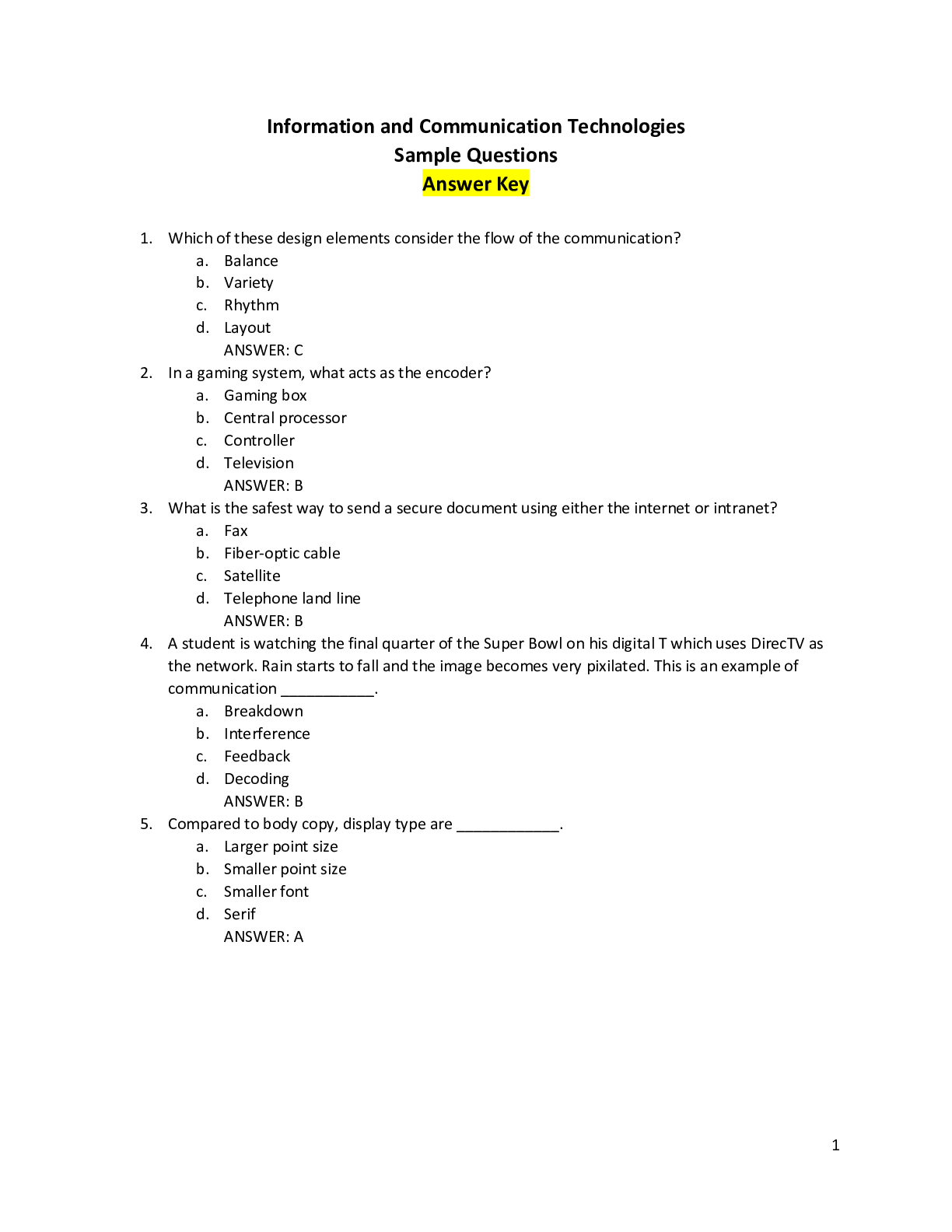

.png)

.png)
